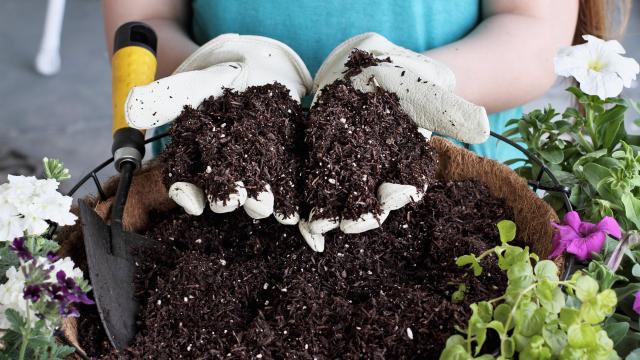Since the beginning of the COVID-19 pandemic triggered what’s been called a “global garden boom,” there has been a renewed interest in various methods and strategies for improving growing conditions for houseplants and outdoor gardens alike.
One example of this is “sterilising” soil. It makes sense that this preparation technique took off when people were spending more time at home than usual, and there was a general concern over sanitation and sterilisation, but is it really necessary? Here’s what to know.
What’s the purpose of sterilising soil?
The idea behind sterilising soil is to eliminate any soil-borne pests, diseases, and weeds that it may contain, in order to give whatever is planted in that soil — seedlings, in particular — the best chance of surviving and thriving.
According to horticulture experts at the PennState Extension, seeds need “adequate moisture and optimum temperatures” to germinate. Unfortunately, this also provides the ideal conditions for the spread of soil-borne disease, including a common fungal infection known as “damping-off,” which can kill or weaken seedlings.
Soil sterilisation is also often recommended for potting or repotting plants of any age, as the process can make them vulnerable to some of the pests, pathogens, or weeds living in the soil.
What, exactly, is ‘sterile soil’?
There are a few things we need to clarify. First, most of the new, ready-mixed potting soil and soilless potting mixes available in stores have already been treated with heat, chemicals, or steam, and are considered sufficiently sterile. If you use the new soil straight out of the bag, there’s no need to sterilise it a second time.
When gardening experts recommend sterilising your soil, they’re typically referring to reusing old soil from your garden, potted plants, or other sources, after treating it at home using one of the methods described below.
But regardless of how and where the soil was sterilised, it doesn’t stay that way for long: Unless you’re working in a completely sterile laboratory, as soon as the soil comes in contact with your hands, tools, or a pot, it becomes contaminated.
That’s why Robin Sweetser, a professional gardener and longtime contributor to The Old Farmer’s Almanac and the All-Seasons Garden Guide, suggests thinking of the soil as being “pasteurised” rather than “sterilised.”
How do you sterilise soil?
Articles discussing at-home soil sterilization typically recommend one or more of the following methods:
- Baking it in an oven
- Heating it in a microwave
- Steaming it in a pressure cooker
- Treating it with hydrogen peroxide
- Covering it in plastic and leaving it out in the sun
- Mixing in boiling water
- Adding a solution of water and formaldehyde
As you can imagine, some of these techniques are more expensive, time-consuming, and labour-intensive than others. There are also other factors to consider, like the terrible smell that fills your home when you bake soil in the oven, and which method is best for the amount of soil you want to sterilise.
Can DIY sterilisation harm soil?
There are risks involved with overcooking the soil, Sweetser explains, including causing damage to plants known as “phytotoxicity,” which can suppress germination and kill young seedlings. She also points out that “soil is a living thing, full of beneficial microorganisms,” and at-home sterilization methods tend to get rid of the helpful parts of the soil along with those that may be harmful to plants.
Plus, if the soil doesn’t have enough moisture when you start the sterilization process, it can result in chemical changes that make it water-repellent, and therefore, incapable of sustaining plant life.
It’s also important to know that not all soil can be heat-treated. For example, if you’re working with potting soil that contains perlite (those small white balls), heating it can produce toxic levels of fluoride.
Is sterilising soil really necessary?
Ultimately, Sweetser concludes that sterilising your secondhand soil at home isn’t worth it — especially when newly purchased potting soil doesn’t require that kind of treatment. She also points out that sufficiently sterilized soil is really only necessary for seed-starting. For everything else, Sweetser reuses old potting mix, as long as the plants that once grew it in were healthy.

Leave a Reply
You must be logged in to post a comment.